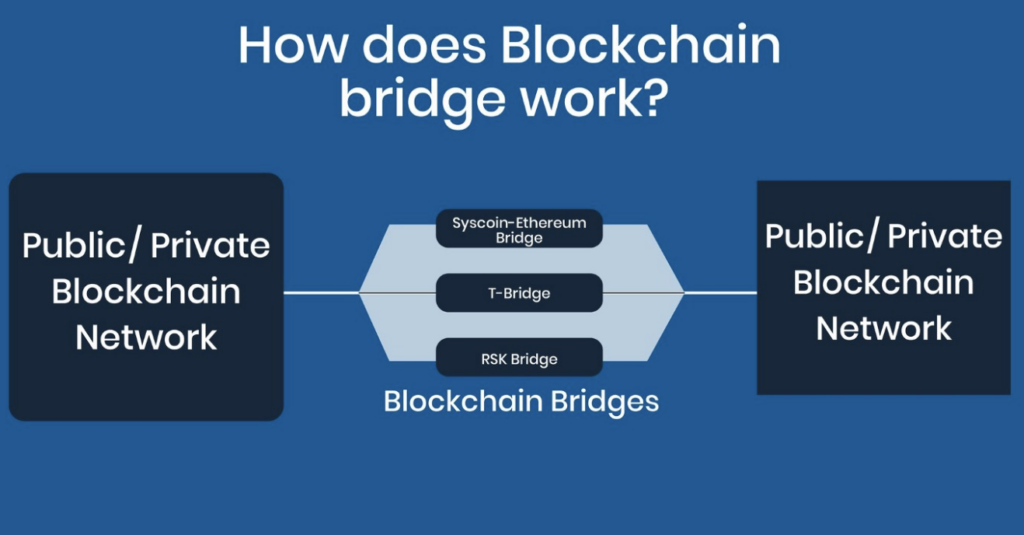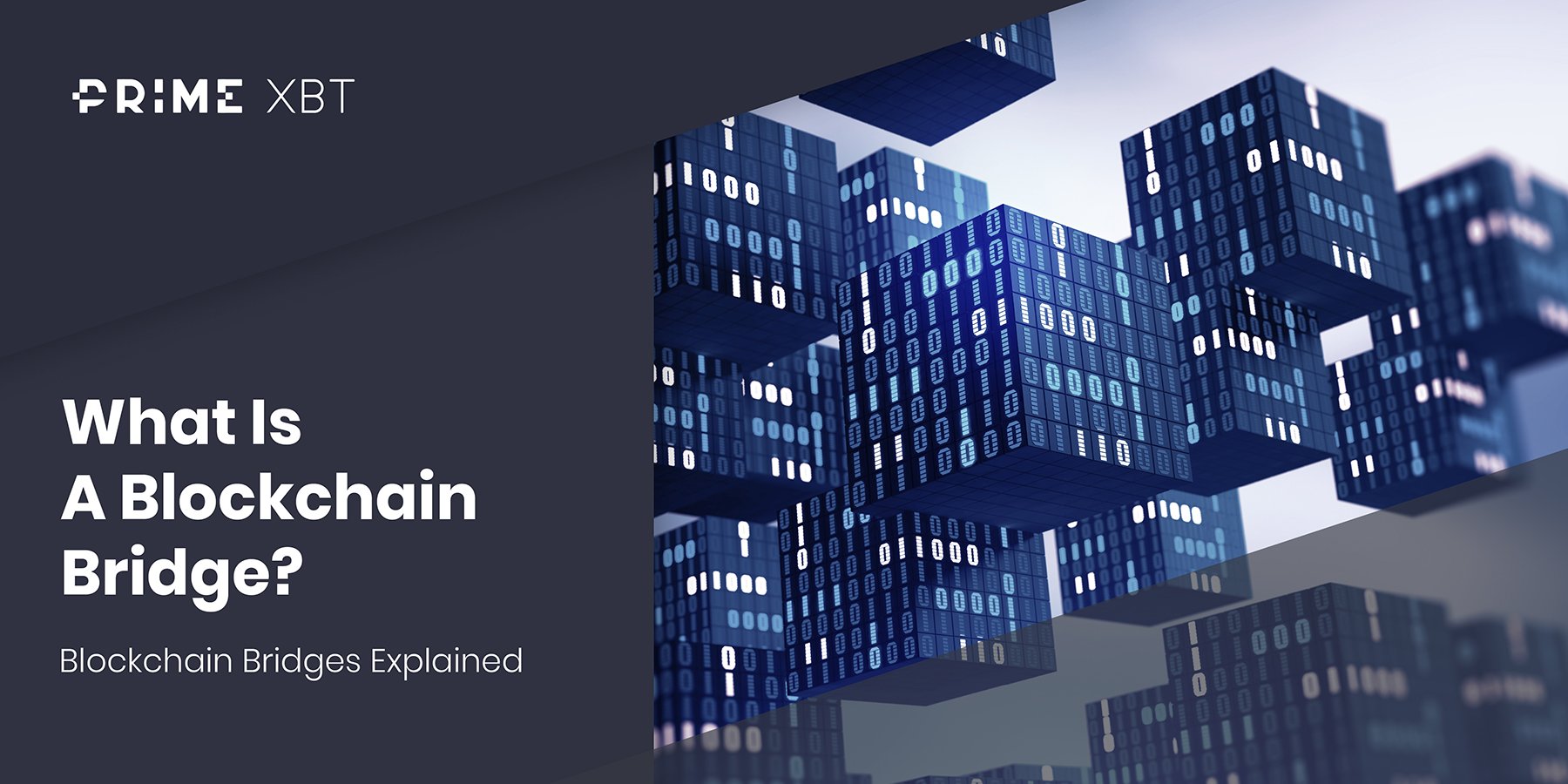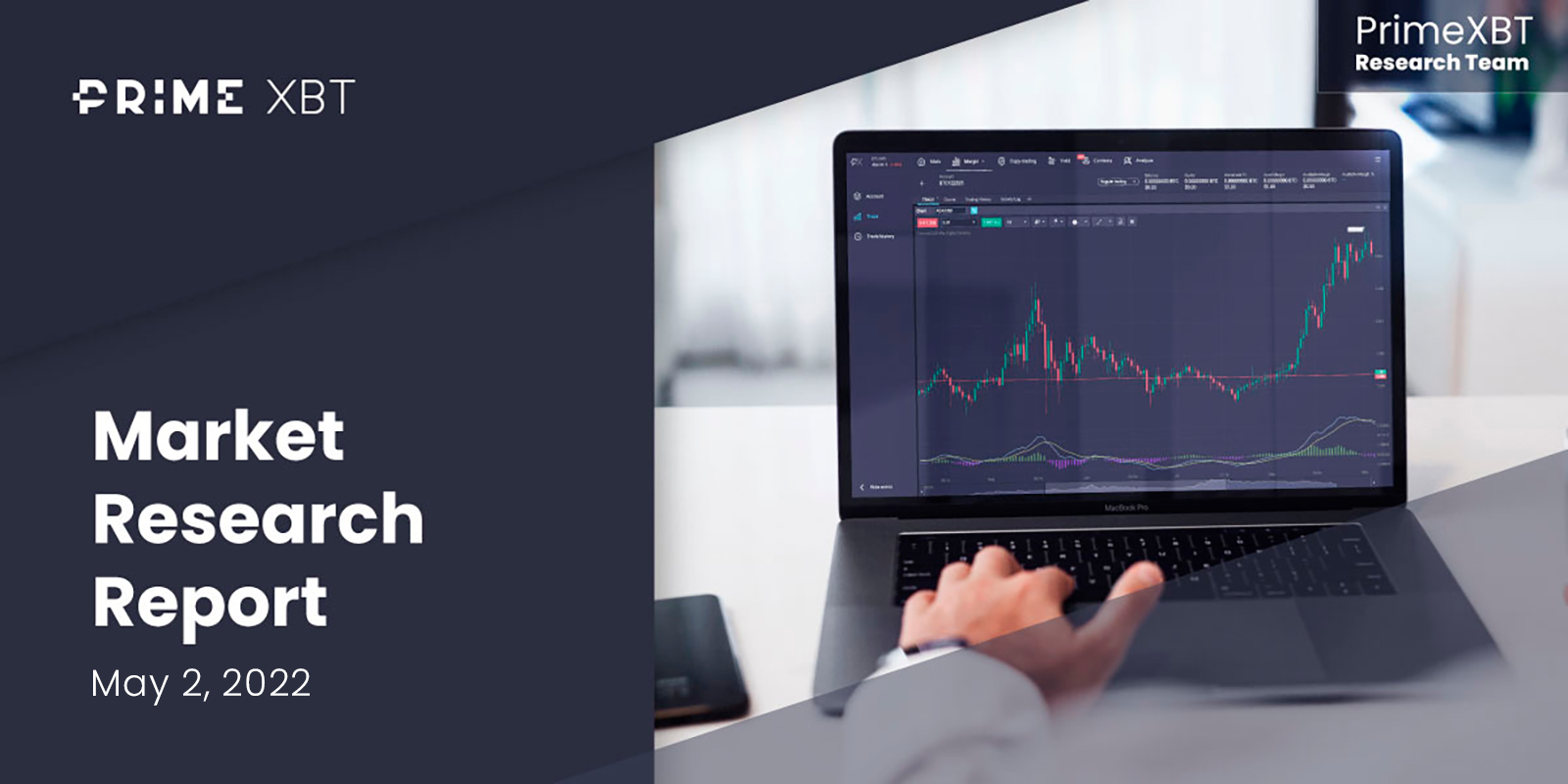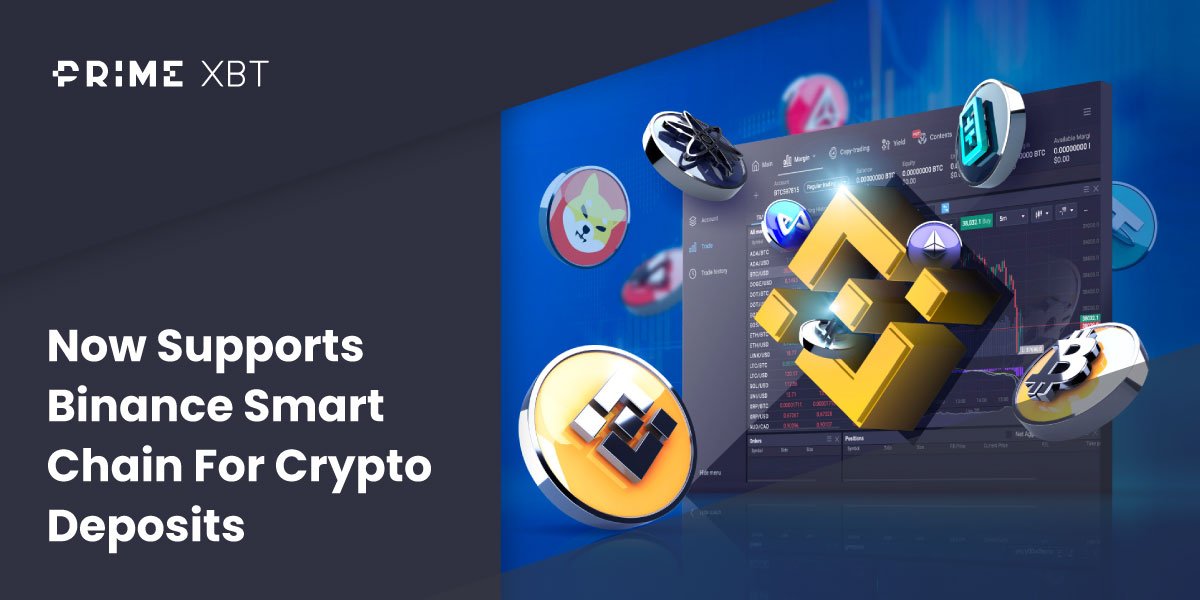Today, Bitcoin and other cryptocurrencies dominate the discussion in finance and on Wall Street, but what makes these emerging assets so valuable is the blockchain network they support.
As the blockchain industry grows vast and expands, the need to connect the various blockchain ecosystems together is becoming more necessary. Blockchain bridges introduce interoperability into current blockchain technology to create a more cohesive and interconnected community of users.
This guide will introduce the audience to blockchain bridges and dive into more advanced concepts which include the future of decentralized finance, the decentralized web, and the entire digital asset industry.
What Is Blockchain? Distributed Ledger Technology Explained
Blockchain technology is a shared, immutable ledger that acts as a digital record for tracking transactions and assets made across a network of users. The asset is most commonly a cryptocurrency, however, the technology behind Ethereum smart contracts allow virtually anything of value to be tokenized and put on the blockchain.
In the increasingly data-driven age, integrity and accuracy of data is critical, as is speed. Blockchain networks provide complete, immediate, and fully transparent data to all parties involved and forever stored within a tamper-proof ledger.
The blockchain itself essentially handles all the accounting related to these transactions, making business operations and data reporting more efficient. Trustless blockchain networks also give greater confidence to transactions as all information is verifiable.
As the blockchain industry scales, the lack of interoperability has limited the growth of the industry and its various use-cases across business and finance. To solve this rapidly growing problem, blockchain bridges are being developed.

What Are Blockchain Bridges?
By default, systems like Bitcoin and Ethereum, and their assets BTC and ETH, are siloed by their own security models. Users and even miners are bound to the rules of the consensus mechanism that underpins the security and accuracy of any distributed ledger.
Blockchain bridges are essentially a way for two such sovereign blockchain networks to communicate with one another. The blockchain bridge allows the transfer of arbitrary data or crypto tokens from one chain to another. The two chains being connected together can have completely unique protocols and consensus mechanisms, yet the blockchain bridge design creates a way for these chains to interact and transact while maintaining a security model.

Types Of Blockchain Bridges
There are four primary types of blockchain bridges, each with their own pros and cons: asset-specific, chain-specific, application-specific, and generalized. There are also cross-chain, sidechain, and off-chain bridges.
Asset-specific bridges access a specific asset from a non-native parent blockchain. Such assets are considered “wrapped” because the assets are fully collateralized by the underlying asset either via custody or protocol solutions. Bitcoin is tokenized this way to create WBTC, for example. RenMV is another form of tokenized BTC on the Ethereum blockchain. There are said to be seven different bridges on the smart contact platform alone. Other networks such as EOS and more have several token bridges designed between them.
Chain-specific bridges connect two blockchains to support simple operations around locking and unlocking tokens on the source chain and minting a wrapped asset on the destination chain. Such bridges benefit from high transaction speed, but are limited to just two chains so the goal of greater interoperability is sacrificed.
Application-specific blockchain bridges provide access to two or more blockchains but for use only within the dapp itself. The DeFi app will benefit from a smaller codebase, but the functionality is restricted to the app and related decentralized networks it is connected to.
Generalized bridges are designed for transferring data across multiple blockchains. The promise of widely connecting the entire ecosystem however trades off independent security, withdrawal integrity, and decentralization to introduce such scaling.
How Do Blockchain Bridges Work?
Blockchain bridges exchange information, data, assets, and more across multiple blockchains for various reasons. Bridges communicate with blockchains in different ways. These processes can be broken down further into trustless or federated bridges.
Trusted or federated bridges typically have a federation of relayers that communicate information and move assets from one chain to another. In a trustless system, users do not need the trust of a federation and instead rely on the protocol.
When a user transfers assets from one blockchain to another utilizing a decentralized bridge, the assets are not actually sent or moved to the new chain. Instead, the bridge functionality involves a two-stage process involving smart contracts and minting.
The assets intending to be sent or moved are frozen on the blockchain where they are living using a smart contract or another similar mechanism. New tokens are then minted representing the newly tokenized and bridged asset. When a user intends to redeem the original asset, the tokenized asset is then burned.
This process prevents the underlying token from being spent. Each protocol offers a unique solution for locking up and minting assets.

The Benefits Of Blockchain Bridges
Blockchain bridges offer a number of benefits to users of all kinds. For the average cryptocurrency user or token holder, it means greater connectivity and interoperability between various ecosystems. For businesses, it means better scaling and a far greater reach.
Blockchain bridges offer a number of benefits to users of all kinds.
To put things into perspective, we’ll use some more commonly used and understood examples. Imagine a world where users of Gmail could only send and receive emails from Google’s email service. Users of Yahoo, ProtonMail, or anything else couldn’t communicate or send data to those users on Google’s system.
The full power of email would never be realized, as it would segregate communities and users onto specific platforms. Now imagine that a bridge is suddenly introduced that allows all these email providers to interact and interoperate with one another. The value and power is easy to understand.
Another scenario involves Apple or Android smartphones. If users could only call or text users who owned the same model phone, it would vastly reduce the value of the global cellular network and create communication issues worldwide.
So why in that case, weren’t blockchains designed from the ground up to be compatible with one another? The reason is security. When Satoshi Nakamoto was creating Bitcoin, they weren’t thinking about how to include hundreds of coins and blockchains that didn’t yet exist at all. What they did care about was security and making certain the blockchain wasn’t able to be hacked, compromised, and the assets and value stored there would also be safe.
That was the most important problem at the time to solve. The technology, like email and cell phones, is now proven, and ready to scale toward mass adoption. The only way for this to occur, however, is through blockchain bridges.
Examples Of Blockchain Bridges
Blockchain bridges are still very early and in constant development. Existing bridges make new breakthroughs regularly and new bridges are being developed all the time. Here is just a small sampling of some of the more wider known blockchain bridges across the industry today.
deBridge
deBridge.Finance seeks to usher in a new era of cross-chain interoperability, which can pass any arbitrary information or transaction data to be executed on the target blockchain, perform cross-chain calls between smart contracts, and build a new generation of cross-chain protocols and applications that haven’t been possible in the past.
It is decentralized and insured by design, offering a unified standard for cross-chain transfers. It also integrates easily within any existing application, and is ready for NFTs and the Metaverse.
Rsk
A bridge smart contract exists on both Ethereum and RSK, which allows ERC20 tokens to be moved across one chain to another. RSK’s website claims that by exchanging tokens between networks allows the token holders to use them in their favorite chain without being restricted to the network choice of the contract owner. “Moreover, this also allows layer 2 solutions to use the same tokens on different chains. The combination of token bridges and stable coins creates a great way of payment with low volatility across networks.”
RSK bridge contracts are upgradeable, ensuring a smoother move to the decentralized bridge in the future. Users can move tokens between networks using the token bridge dapp with the Nifty wallet or Metamask with a custom network setup.
ChainBridge
ChainBridge by ChainSafe, is a modular multi-directional blockchain bridge designed to interact with multiple networks, primarily Ethereum, Ethereum Classic, and Substrate-based chains. According to official ChainBridge docs the bridge operates under a trusted federation model. “Deposit events on one chain are detected by a trusted set of off-chain relayers who await finality, submit events to the other chain and vote on submissions to reach acceptance triggering the appropriate handler.”
The firm says that research is currently underway to reduce the levels of trust required and move toward a fully trust-less bridge.
Centrifuge
We’re moving to Centrifuge next, because through a collaboration with ChainSafe, the project offers a modular, asset agonistic, multidirectional bridge for fungible tokens or NFTs. Centrifuge says it can bridge assets like invoices, real estate, royalties, and DeFi. Borrowers can finance real-world assets without banks or another third-party intermediary.
Centrifuge is built on Substrate, powered by Ethereum, and bridged with Polkadot.
Polkadot
Polkadot is claimed to be the blockchain of blockchains, essentially acting as the blockchain backbone to all other blockchain ecosystems. Polkadot works through parachains that can include their own rules, tokens, and designs, while remaining completely interoperable and secure due to Polkadot’s central Relay Chain.
In addition, Polkadot can connect external blockchain networks to create an even broader network of blockchains. Various components of blockchain are configurable. Polkadot can even connect two external blockchains together, such as Bitcoin and Ethereum.
Interlay
Interlay is a trustless bridge between Bitcoin to Polkadot, which allows the minting of Bitcoin-backed assets onto Polkadot as PolkaBTC.
Wanchain
Wanchain is a permissionless blockchain interoperability system that can bridge another of blockchain networks, including Bitcoin, Ethereum, Binance Smart Chain, and others.
Snowfork
Snowfork offers a bridge between Ethereum and Polkadot for the transfer of ERC-20 tokens and ETH to and from Ethereum and Polkadot.
Cosmos Gravity Bridge
The Cosmos Gravity bridge transfers funds and data back and forth between Ethereum and Cosmos. The Gravity module is implemented on the Cosmos chain and is responsible for minting tokens.

The Future Of Blockchain Bridges
Because of Bitcoin, blockchain technology is everywhere and will eventually be the foundation of all of finance. Blockchain technology has applications in all forms of business, and developers are always experimenting with new ecosystems and solutions that will also require more bridges to connect.
Think of the early days of society. As cities and towns began to scale in size and communities needed to grow for economies to also scale, bridges, canals, and other ways to travel and move goods were created. Over time, the massive interconnected global economy of today blossomed, and so will the blockchain eventually.
Blockchains today are like tiny cities or towns with quickly growing communities. As these communities grow and their needs evolve, the need for bridges to connect one ecosystem with another becomes more important.
Using just Bitcoin and Ethereum alone as an example, one can see the benefits of what blockchain bridges can provide. Bitcoin is a groundbreaking development in finance, but slow due to its security and unable to work natively with DeFi applications. However, Bitcoin can be wrapped in Ethereum to create WBTC, which allows Bitcoin to interact with DeFi applications as an ERC-20 token. Tokenizing other assets, such as stocks, securities, real estate, bonds, and more are all possible.
Bitcoin is a groundbreaking development in finance, but slow due to its security and unable to work natively with DeFi applications.
This is only the case with just two of the top blockchains today, and there are thousands more that currently exist, much like there are hundreds of thousands of tiny towns and cities out there, that aren’t as well known as New York City, London, Moscow, or Tokyo.
Most of finance exists in those big cities, but beyond their borders all kinds of business exists. It is the bigger cities that tend to provide the most liquidity, so all of the most important bridges will always connect to these cities – Bitcoin, Ethereum, etc. – before they connect to smaller towns in more obscure locations.
Again, using the smartphone and email examples, anyone can see why connecting such ecosystems digitally is critical to mass adoption. With more users across a unified blockchain industry, it will create more price stability, better liquidity, and a more robust experience for all users here on out.
Blockchain bridges and related assets are also among the hottest crypto assets to trade today. kellyannahtrade recently added Polkadot, alongside several other altcoins, next to Bitcoin, Ethereum, and Litecoin.
Polkadot is one of the most innovative blockchain bridges today, and also offers the DOT token. kellyannahtrade offers long and short positions on DOTUSD, so traders can speculate on price action and potentially profit from the rapid proliferation of blockchain bridges in the future.
Are you ready for the future of the blockchain?
The future of the blockchain industry is massive, and it will all be connected by blockchain bridges like the ones mentioned in this guide. Are you ready for the future of the blockchain?
Blockchain technology alone is still in its infancy, and not fully understood. Developers are constantly creating new types of chains and ecosystems, which has created an urgent need for bridges to connect each separate infrastructure. With the technology itself so new, there are often many questions related to blockchain bridges that remain. Here are some of the most commonly asked questions related to blockchain bridges today.
What Are Bridges In Blockchain?
Blockchain bridges are a way for two unique blockchain networks to communicate and interact with one another. Blockchain bridges allow information, tokens, assets, and more to be sent across one chain to another.
How Do Blockchain Bridges Work?
Blockchain bridges work in a variety of ways. Most commonly, there are no assets actually sent, yet the original asset is locked up in the protocol, while another new token representing the asset is minted on the corresponding blockchain. This prevents double spending of the underlying asset.
What Is Blockchain Interoperability?
Blockchain interoperability is the key to mass adoption in cryptocurrencies. For example, DeFi projects would enjoy deeper liquidity if they were interconnected by bridges to various blockchain ecosystems. More users could access the application regardless of the blockchain and asset of choice.
What Is Blockchain Scalability?
Blockchain scalability typically refers to throughput and speed, and the more transactions the protocol can handle. When talking about the bigger picture of blockchain, however, scalability also involves scaling across multiple blockchains while also addressing speed, throughput, security,and other important factors to maintain withdrawal integrity.
What Are The Disadvantages Of Blockchain Technology?
The current disadvantage of blockchain technology is that each ecosystem is siloed. This prevents assets and users from being shared from one ecosystem to another. Blockchain bridges are the key to eliminating the disadvantages of blockchain.
Risk Disclaimer:
Investing in or trading gold or other metals can be risky and lead to a complete loss of capital. This guide should not be considered investment advice, and investing in gold CFDs is done at your own risk.
The information provided does not constitute, in any way, a solicitation or inducement to buy or sell cryptocurrencies, derivatives, foreign exchange products, CFDs, securities, and similar products. Comments and analysis reflect the views of different external and internal analysts at any given time and are subject to change at any time. Moreover, they can not constitute a commitment or guarantee on the part of kellyannahtrade. The recipient acknowledges and agrees that by their very nature any investment in a financial instrument is of a random nature and therefore any such investment constitutes a risky investment for which the recipient is solely responsible. It is specified that the past performance of a financial product does not prejudge in any way their future performance. The foreign exchange market and derivatives such as CFDs (Contracts for Difference), Non-Deliverable Bitcoin Settled Products and Short-Term Bitcoin Settled Contracts involve a high degree of risk. They require a good level of financial knowledge and experience. kellyannahtrade recommends the consultation of a financial professional who would have a perfect knowledge of the financial and patrimonial situation of the recipient of this message and would be able to verify that the financial products mentioned are adapted to the said situation and the financial objectives pursued.




